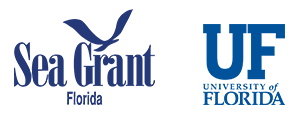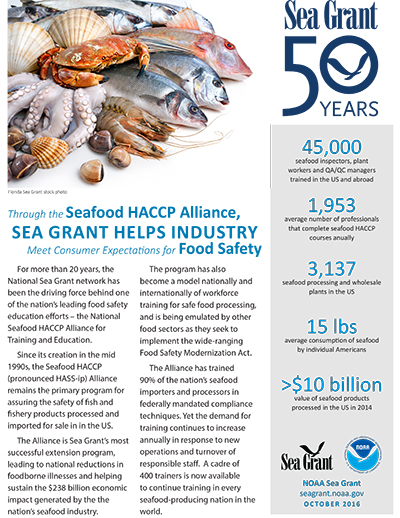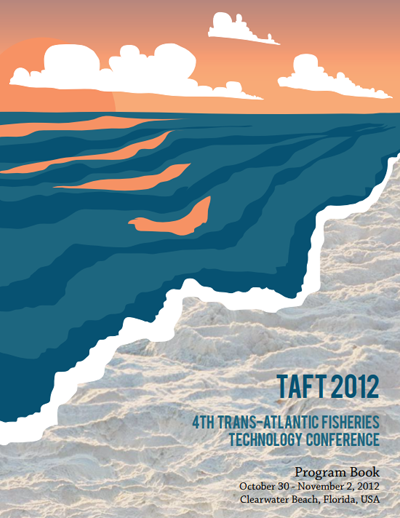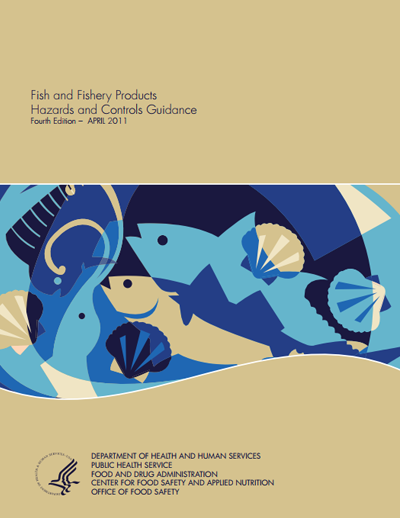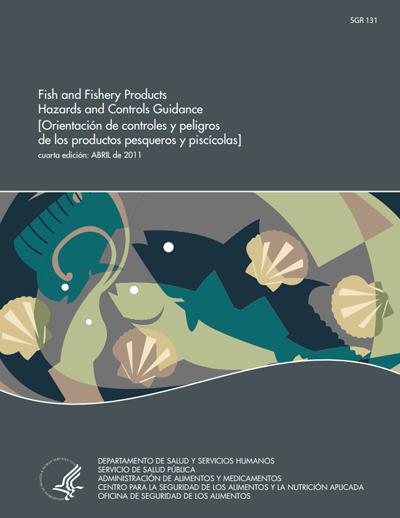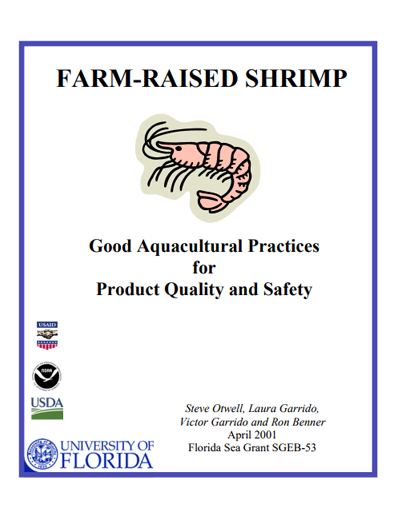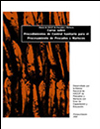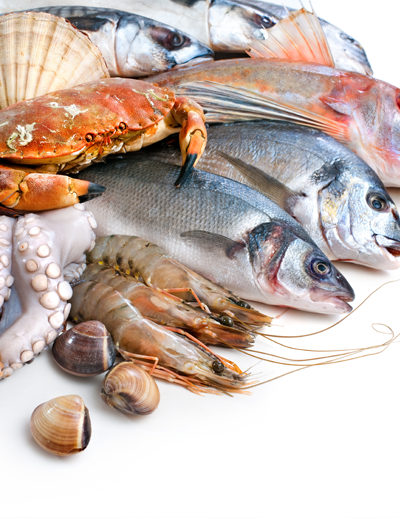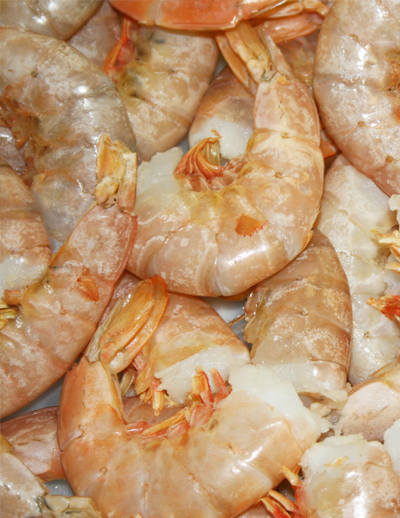To order publications, email the publication number and title to info@flseagrant.org. Be sure to include your mailing address and phone number.
Análisis de peligros y puntos críticos de control Programa de capacitación 6.th edición
Esta es la más reciente edición del manual de entrenamiento básico HACCP.
SGR-134
sexta edición
julio de2018
Esta es la más reciente edición del manual de entrenamiento básico HACCP. La revisión fue ejecutada para asegurar que el manual sea consistente con los requisitos implementados por la regulación HACCP para productos pesqueros de la FDA (21 CFR 123) y por la última edición de la Guía de Peligros y Controles de la FDA. Nota: Los modelos de Planes HACCP están disponibles digitalmente sin costo alguno.
Through Seafood HACCP Alliance, Sea Grant Helps Industry Meet Expectations for Food Safety
For more than 20 years, the National Sea Grant network has been the driving force behind one of the nation’s leading food safety education efforts — the National Seafood HACCP Alliance for Training and Education. The Alliance is Sea Grant’s most successful extension program, leading to national reductions in foodborne illnesses and helping sustain the $238 billion economic impact generated by the nation’s seafood industry.
10-Year NOAA Sea Grant Aquaculture Vision
Sea Grant will likely be investing $50 million to $100 million in aquaculture research and technology transfer over the next 10 years. A clear vision will help guide strategic investments to support and expand the aquaculture industry. This document explains Sea Grant’s appropriate roles over the next 10 years, and priority research strategies leading to sustainable economic development, environmental conservation and social well-being.
Florida Trend Report: Sourcing Your Seafood
September 2015
This report is part of a two-year campaign, Florida’s Changing Seas, published in Florida Trend. This report discusses what types of seafood Florida has to offer, where to look for it, and how to make safe and nutritious choices.
Seafood Knowledge, Perceptions and Use Patterns in Florida
TP-205
September 2014
Chuck Adams, Lisa Krimsky, Brooke Saari and Bryan Fluech
This survey of Florida seafood consumer preferences, perceptions and concerns assesses the regional educational needs of seafood consumers. The survey
addresses the myriad issues concerning seafood quality, safety, product origin, mislabeling, sustainability and traceability.
Reflections on Gulf Seafood
SGEF-206
August 2013
Otwell, Steve
Consumer confidence in the safety of seafood harvested from the Gulf of Mexico has largely recovered since the Deepwater Horizon oil spill in 2010, though for some, concerns still linger. The key for consumers is to focus on reasonably minimizing risk. Gulf of Mexico seafood has now been scrutinized more extensively than most foods sold in the United States. Every scientific study has concluded that there is no sign of risk with Gulf seafood. For those willing to consider the evidence, this article offers some answers to the most common and most important questions on the topic.
TAFT 2012: Proceedings of the 4th Trans-Atlantic Fisheries Technology Conference
TP-197
November 2012
This program features more than 100 abstracts of presentations and posters delivered during the joint TAFT/Seafood Science and Technology Society of the Americas international fisheries conference held in Clearwater Beach, Fl.
Fish and Fishery Products Hazards and Control Guidance (FDA Hazards Guide)
SGR-129
4th Edition, March 2020
The 4th Edition of the ‘FDA Guide’ is provided in a new 3-ring binder format which can be used to add and replace future edits of individual chapters produced by FDA. The current version is current through August 2019. The only additions by FDA through March 2020 include minor changes in Appendix 5 that can be added to the current version. In accordance with required training protocol maintained by the Seafood HACCP Alliance and the Association of Food and Drugs Officials, this version is the required training manual that should accompany the Seafood HACCP Training Curriculum Manual (Blue Book – SGR 132).
Orientación de controles y peligros de los productos pesqueros y piscícolas (FDA Hazards Guide, Spanish-language translation)
SGEF-120
May 2007
Sweat, D.
An illustrated guide to preparing blue crab.
Farm-raised Shrimp: Good aquacultural practices for product quality and safety
SGEB-53
April 2001
Otwell, S.; V. Garrido and R. Benner
Shrimp is one of the most popular and highest valued seafood selections in the world. Shrimp aquaculture keeps growing steadily despite the adverse conditions and new challenges faced by the farmers. This document reviews quality and safety concerns for farm-raised shrimp and offers farmers tips on pond care, location, water quality, feed, harvesting practices and more.
Sanitation Control Procedures for Processing Fish and Fishery Products
Purchase – $35
Also available in Spanish
SGR-119
First Edition, 2000
Developed by the National Seafood HACCP Alliance for Training and Education
This course is intended to assist the seafood industry in developing and implementing sanitation control procedures as mandated by the Food and Drug Administration (FDA). These mandates require seafood processors to monitor sanitary control procedures used during processing in order to show their compliance with approved sanitary conditions and practices. Likewise, seafood importers must verify that the seafood imported was processed in accordance with the same FDA mandated HACCP requirements that include sanitation procedure monitoring and records.
Curso sobre Procedimientos de Control Sanitario para el Procesamiento de Pescados y Mariscos
SGR-122 (Spanish-language version of SGR-119)
2000
Esta guía es el manual de entrenamiento para el curso dictado con el propósito de asistir a la industria pesquera en el desarrollo e implementación de Procedimientos de Control Sanitarios como requeridos por la Administración de Drogas y Alimentos de Estados Unidos de América (US FDA). Estos mandatos requieren que los procesadores de productos pesqueros monitoreen los procedimientos de control sanitarios utilizados durante el proceso para documentar el cumplimiento con las prácticas y condiciones sanitarias aprobadas. Igualmente, los importadores de productos pesqueros deben verificar que los productos importados fueron procesados bajo los mismos requisitos HACCP de la US FDA que incluyen el monitoreo y registros de los procesos sanitarios.
Seafood Safety: Economics of Hazard Analysis and Critical Control Point (HACCP) Programs
TP-94
1998
Cato, J.C.
This document on economic issues associated with seafood safety was prepared to complement the work of the Fish Utilization and Marketing Service, Fishery Industries Division, Fisheries Department, FAO in seafood technology, plant sanitation and Hazard Analysis Critical Control Point (HACCP) implementation. The document was written during participation by the author in the FAO Partnership Programme with Academic Institutions.
HACCP Program: Penaeid Shrimp: Dockside Operations (for illustrative purposes)
SGEB-43
November 1997
Otwell, W. S; V. Garrido and P. Simmons
As of December 18, 1997 all Florida seafood processing firms must operate with a hazard analysis and critical control point (HACCP) program as mandated by the U.S. Food and Drug Administration and adopted by the FL Dept. of Agriculture and Consumer Services. Firms unloading, grading, packing and/or holding shrimp, typical “shrimp packing houses” are considered seafood processing firms. In an effort to help the Florida shrimp packing houses, we have put together a HACCP model and model SSOP record to meet the requirements.
